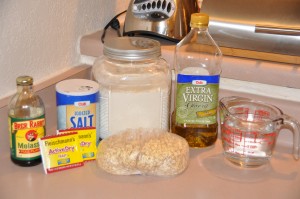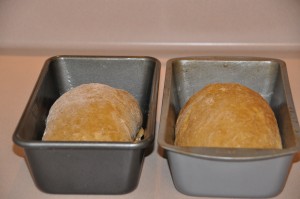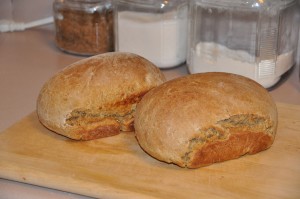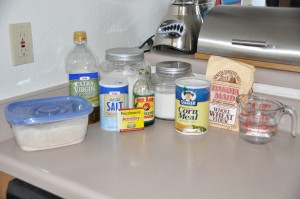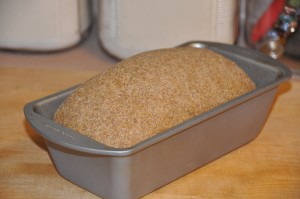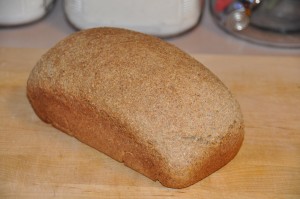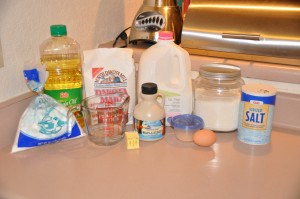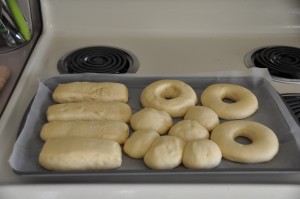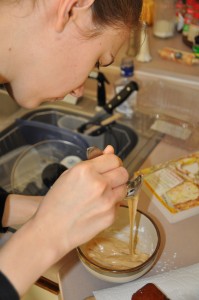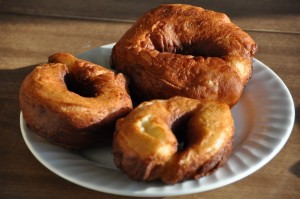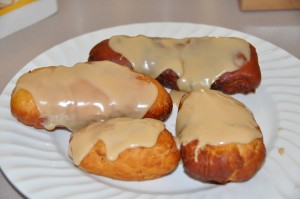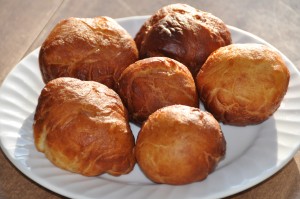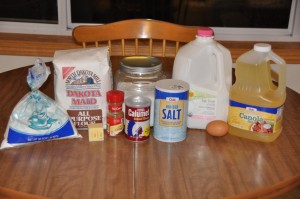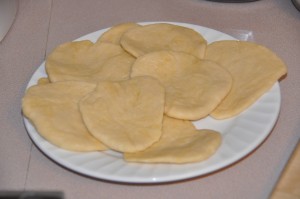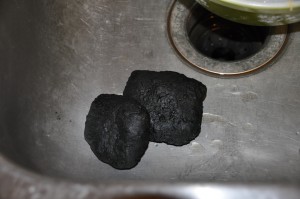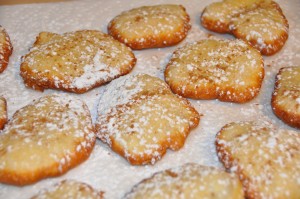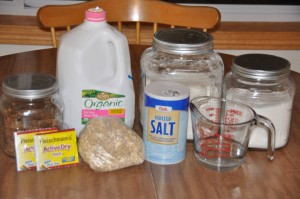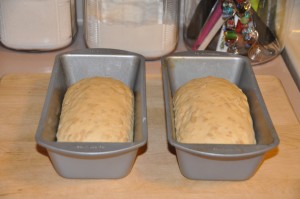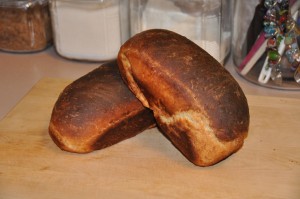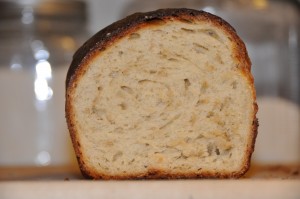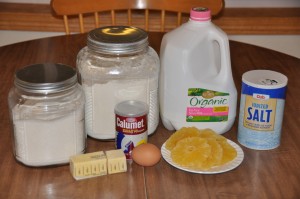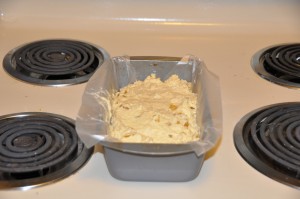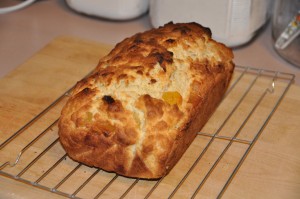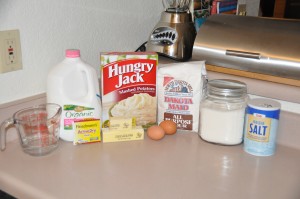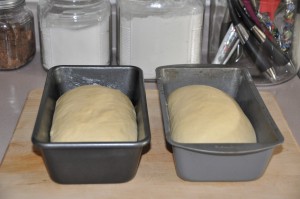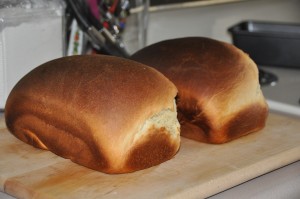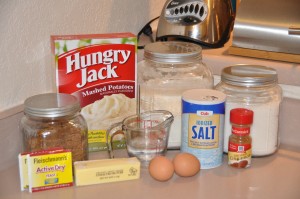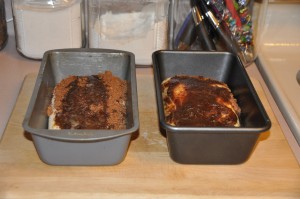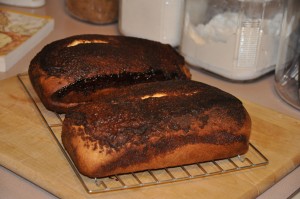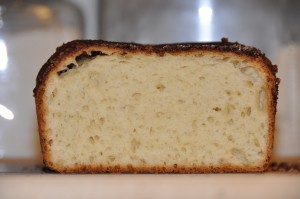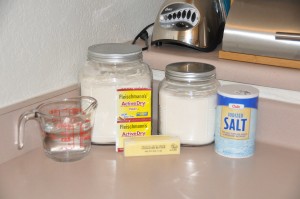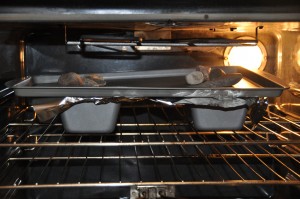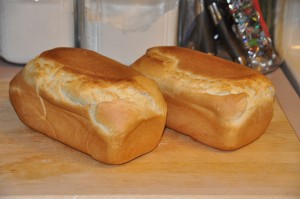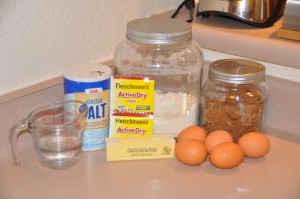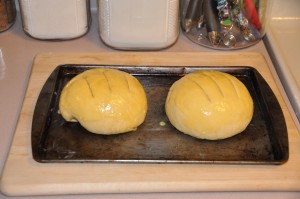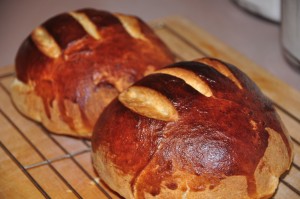“This is as good an oatmeal bread as I have ever eaten, and it makes wonderful toast.”
-James Beard, Beard on Bread
March 27 or bust! I have less than two months to bake the remaining 19 recipes, so I am increasing my pace. Last night I made Maryetta’s Oatmeal Bread.
Here are the ingredients:
The recipe specifies “salad oil.” I wasn’t quite sure what that was, but I used olive oil.
I will say upfront that I really struggled with this recipe. I started by mixing my yeast, water, oatmeal, and two cups of flour together and letting that mixture rise. Then I added the rest of the ingredients. The recipe calls for seven and half to eight cups of flour, but I struggled to mix in six. I ended up with a smaller amount of dough than I should have, and what I did have was too dense. I didn’t seem to get a good rise, and instead of being patient I rushed the process.
Here are my loaves before going into the oven–I think an additional hour of rising would have been beneficial, but the peril of weeknight baking is a tight time table.
I baked the loaves at 350 degrees for 45 minutes, pulled them out of the oven, and took this picture:
Then I cut into a loaf and realized that my bread was a doughy mess. I ended up baking the bread for an additional twenty minutes, at which point the crust had hardened to the point of cement and I still had doughy streaks around the edges of the loaf.
Aside from my baking struggles, I don’t really like the flavor of Maryetta’s Oatmeal Bread anyway. A more apt name would be “molasses bread.” If you really like molasses in an otherwise unsweetened bread, this is the bread for you; if you’re like me, and believe that molasses belongs in heavily sweetened cookies dusted with sugar, you will be disappointed.
However, this bread did serve to remind me that bad things tend to happen when you lose your patience with bread making.

